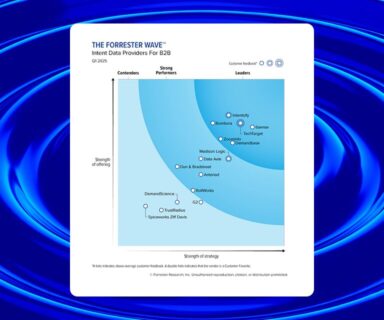With the shift to Account Based Marketing (ABM) being the priority for many B2B marketers, do buyer personas still matter? The short answer: yes, and this post will explain why.
 As ABM adoption continues to grow, companies are spending increased time and resources figuring out who their ideal prospects are and using purchase intent data to build targeted account lists. Yet, businesses that see the most success with ABM don’t stop there.
As ABM adoption continues to grow, companies are spending increased time and resources figuring out who their ideal prospects are and using purchase intent data to build targeted account lists. Yet, businesses that see the most success with ABM don’t stop there.
ABM is not only building a list of target accounts that are in-market for your solutions, but considering account-level insights when marketing to those accounts. Using lead to account mapping to tie individual lead actions to an account, smart ABM marketers then use that information to define messaging and follow up strategies.
However, though account-level data should be used to understand company demographics and what an account as a whole cares about in terms of pain points and purchase drivers, that should not be the end-all, be-all for personalized outreach. Messaging every prospect at an account with the same content, even if it’s topically-relevant at the account level, may still fall flat.
As most B2B marketers know, IT buying is a team sport. According to TechTarget’s most recent Media Consumption study, 83% of IT buying teams include 2-7 stakeholders, and each of those stakeholders care about very different things. For example – look at the makeup of the buying team researching an Enterprise Content Management project, and what each stakeholder cares about:
- Executive IT: Cares about how to integrate ECM into broader technology ecosystem.
- Legal/Records Management: Cares about storing, managing, and retrieving enterprise information according to industry requirements.
- Content Strategists: Cares about information architecture, organization and integration throughout the company.
As you can see, each stakeholder’s pain points and interests regarding an ECM purchase are wildly different. Because of this, messaging every prospect at a target account with the same content can still miss the mark, even if the content is tailored to the account as a whole. As a result, taking buyer personas within target accounts into consideration is still a must-do.
Developing buyer personas at target accounts
When developing buyer personas within your target accounts, there are many attributes to consider, including the following:
Account demographics
The makeup of the buying team can be different depending on company demographic information, for example, a company’s size. In a small business, there may not be as many individuals involved in the decision making process simply because there are less employees overall. However, it’s likely that one person wears multiple hats and is responsible for the research that two or three different personas may take on at a larger business.
Buyer persona pain points
Going back to the example of an ECM buying team above, each persona has different pain points, meaning content needs to be specific to each buying team member, not only the account. When defining persona pain points, think about the challenges and problems they are often up against, and how your solution can alleviate those issues, and message with relevant content accordingly.
When do they get involved?
Not every member of the buying team is involved in the research process from the beginning. For example, C-Level executives often become part of an account’s research journey later in the process, and as a result, require more down-funnel content. The C-Suite is often looking for content that speaks to the business case, how a solution fits with their business’ overall infrastructure and what a solution is going to cost, so high-level, awareness-stage content is less likely to resonate.
Though building a named account list is typically the first step for many when launching an ABM strategy, there is much more to it. To learn more about how to better plan and kick-start your account-based marketing efforts, connect with us today.




